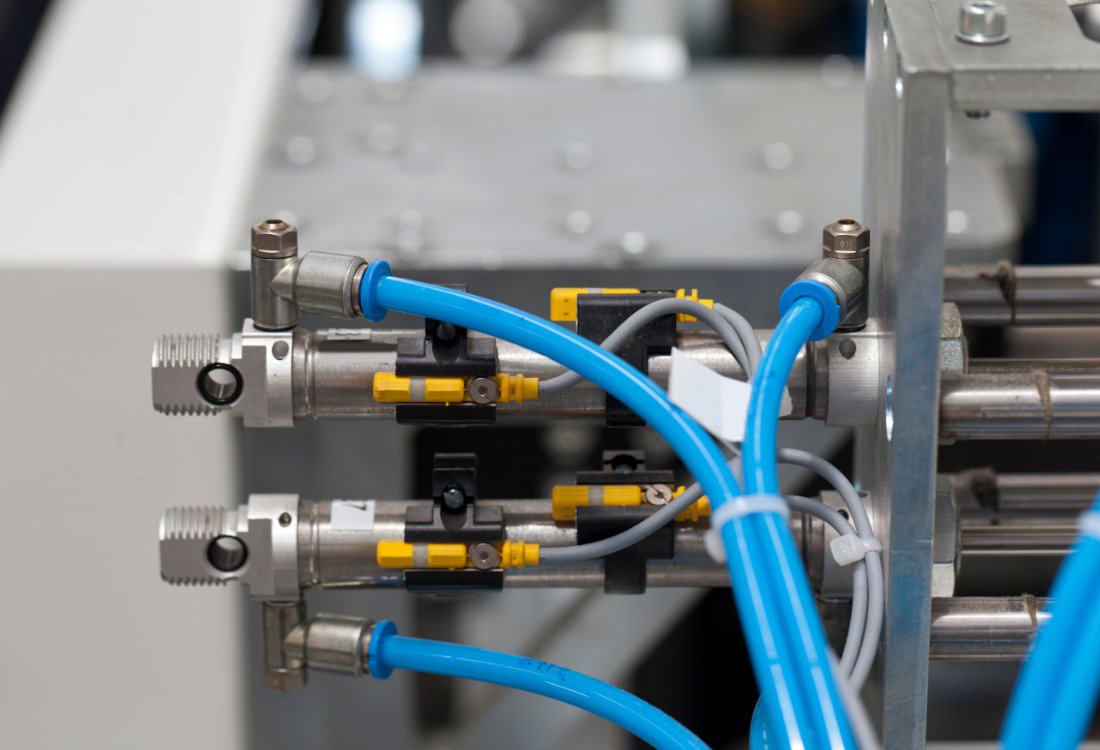The way that pneumatic components are designed and produced is undergoing a substantial transformation, as new design strategies, materials, and engineering technologies increase the options available to design engineers. These innovations have the potential to drive greater performance and safety while reducing the environmental footprint of fluid power applications. Read on to find out more.

1. Energy Efficient Pneumatics
Increasing the energy efficiency of pneumatic systems is an important way of reducing operating costs and improving environmental practices. There are several recent technologies that now enable pneumatic systems to deliver more output with less power. For example:
- Low pressure systems are designed to optimise energy consumption in applications that do not need high compression.
- Next gen air compressors use variable speed technology to adjust their power output in step with demand, reducing wasted energy.
- ‘Regenerative pneumatics’ are an emerging field in which energy from exhaust air is captured and reused to deliver new power to the application.
2. Sustainable Materials
Sustainability extends beyond energy used to the materials used to create fluid power systems. In pneumatic components, recycled metals are now more widely used in cylinders and valves to reduce the environmental footprint of primary manufacturing. Some systems are also designed to be lubricant free, reducing or eliminating the need for oils and lowering the risk of contamination.
3. Small-Scale Components
Smaller, faster, stronger, cheaper, more efficient – miniaturisation is a strong driver of innovation in fluid power engineering across various industries. The reason is that compact components are better suited to applications where space is constrained, providing the same function as traditional components from a smaller footprint. For instance, miniature pneumatic valves are now used in precision medical devices such as surgical equipment and ventilators, and micro-actuators, designed to generate a significant force output at a reduced size, are used in the robotic arms found in electronic chip and semiconductor factories. Miniature components also better suited to the modular designs used by many fluid power applications, making systems more easily scalable and reconfigurable to different tasks.
4. Improved Noise Reduction
Hydraulic and pneumatic systems can be notoriously noisy, and with noise pollution becoming a more important concern, the engineering sector is addressing the issue with a variety of noise dampening technologies. Some valves and actuators now have integrated silencers, for instance, which help to reduce noise levels generated during airflow and actuation, while some air compressors are specifically engineered for quieter performance without impacting operational output. These innovations are made possible by acoustic simulation software, which is another innovation in pneumatic design. Acoustic simulators enable engineers to virtually test various device configurations against noise emissions and regulations to define the best solution for different applications, such as low noise equipment for hospitals and urban construction environments.
5. Improved Safety
Safety is another critical driver of innovation in fluid power systems, with many modern pneumatic applications now coming with inbuilt fail safes and protective mechanisms that improve safety for operators and surrounding machinery. Among the most important of these are emergency shut-off valves that immediately stop airflow when safe operating parameters are breached. Using a similar technology are the dynamic braking mechanisms now used in some pneumatic hoists and elevators, improving safety for heavy duty manufacturing and construction applications. The pressure relief devices used in pneumatic applications are also improving, minimising the risk of overpressure scenarios by releasing excess air when necessary. With the addition of sensors and monitoring equipment, many of these safety features can be automated, avoiding the risk of issues being overlooked and minimising manual input.
Find Out More
To discuss your fluid power application and the right components to deliver the performance requirements you need, please get in touch with the experienced team at HydraStar today by clicking here.


